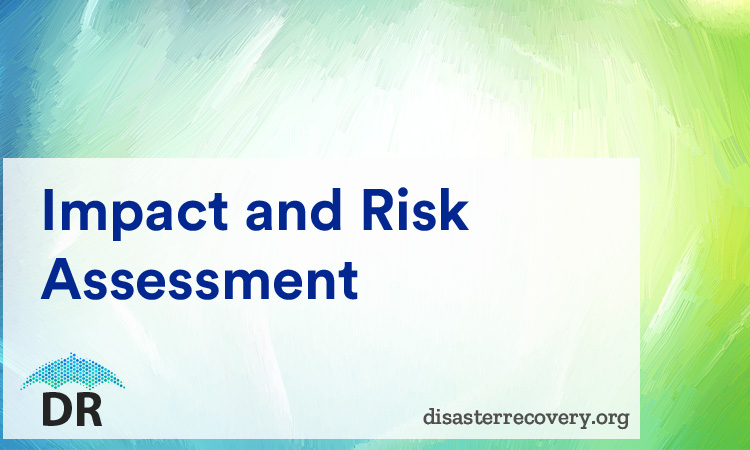Risk Assessment is one of the key components of disaster recovery planning. In order to create the most effective plan for recovering after a calamity, an organization must first consider what the potential disasters are that they could feasibly encounter, and how each of these might impact their business continuity.
Impact and Risk Assessment

To make their efforts the most efficacious, executives and board members should consider every possible scenario when analyzing the potential risks their organization might face. This means that all potential risks should be taken into account, from somewhat mundane hazards like in-house power failures to extremely perilous events like acts of war or terrorist attacks. As the purpose of a disaster recovery plan is to outline what actions will be taken in the event that an organization does experience disaster, these crises should not only be contemplated, but their potential impacts must be evaluated as well as what steps will be taken to overcome the impact if one’s disaster recovery plan is going to truly be effective and practical.
In the process of disaster recovery, the primary function of risk assessment is to predetermine as many types of disasters as possible that an organization may encounter, and then to figure out how the organization will deal with each crisis if it occurs.
Unfortunately, disaster recovery assessments can sometimes become very complex. In order to alleviate some of the confusion and to assist you with this task, we have provided a free booklet and disaster recovery template to guide you and help get your organization’s analysis started. Below we have included a brief list of some of the disruptive events that could have an affect on your normal operations and that should be taken into consideration when preparing your disaster recovery plan.
Possible crises and disasters for consideration:
- Hard drive meltdowns
- Building fires
- Floods
- Power failures
- Internet failures
- Data line failures
- Earthquakes
- Epidemic illness, which would cause a sudden and significant decrease in staffing, including those employees who hold vitally important positions
- Terrorist attacks
- Acts of war
It’s important to keep in mind that this list of possible disasters is far from exhaustive and does not include many of the specialized concerns your particular organization may need to consider and/or include in its disaster recovery plan. For example, if yours is a smaller corporation, lesser events can have a greater impact on staffing, or who is on premises with the necessary knowledge to perform certain tasks, etc.

